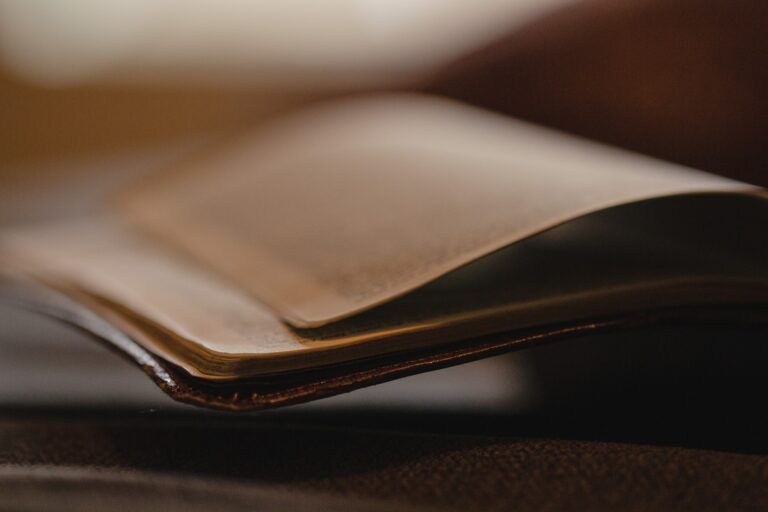Explore the Power of Metaphor in Poetry: Definition, Uses Case, and Examples of Metaphor
Introduction
Welcome, poetry lovers! If you are here to explore the power of metaphor in poetry, then you’ve come to the right place. I’m thrilled to share my insights on this topic.
Poets have used it throughout history to convey ideas and emotions more powerfully than literal language alone can. They create vivid images that can stir up feelings in readers and add depth to poems. In this article, we’ll look at metaphors, how they are used in poetry and some examples from classic literature.
By the end of our conversation today, you will be equipped with the knowledge and tools needed to use metaphors effectively in your work – or even appreciate them better when reading other people’s writing. So without further ado, let’s get started exploring the power of metaphor in poetry!
Definition And Example Of Metaphor
It has been used in poetry for centuries and is essential for poets to communicate their ideas. Incredibly, studies show that we use it up to six times more often than other figures of speech! Nowadays, many people don’t even realize they’re using a metaphor when saying, ‘time is money.’ It is defined as a figure of speech that implicitly compares different things or ideas by connecting them through shared characteristics or qualities. Essentially, it’s comparing two, unlike objects without actually saying the words ‘like’ or ‘as.’
One quickly realizes how powerful this device can be when looking at examples of metaphors in poetry. For instance, Robert Frost wrote in his poem The Road Not Taken: “Two roads diverged in a yellow wood…” Here he paints a vivid image in our minds with only four short words- what could have been described as ordinary paths now becomes so much more thanks to the metaphor.
Other renowned artists such as William Wordsworth also incorporate it into their work; take his famous line from Ode on Intimations of Immortality From Recollections of Early Childhood: “The Rainbow comes and goes” – describing the fleeting nature of life but also creating a beautiful visual representation of this concept.
Overall, understanding the definition and example of metaphor is key for aspiring artists who wish to convey their emotions through written works fully. It can help bring abstract concepts to life, adding depth and beauty to what may seem dull and mundane. When combined with skilled crafting techniques, these tools allow us to craft powerful pieces that resonate with readers.
Difference between Extended Metaphor to Metaphor
An extended metaphor is when a metaphor is sustained throughout a piece of literature. In contrast, a regular metaphor may appear once or twice but not throughout the poem.
So how do writers use these different types of metaphors? In an extended metaphor, the writer will draw upon multiple comparisons throughout their work to convey a message. For example, one might compare a journey to life and use this for several lines of poetry. On the other hand, a regular metaphor would only make one comparison, such as comparing a person’s eyes to stars.
Determining which type of metaphor works best for your writing can be difficult. Here are some tips:
- Think about the overall message you want to communicate with your poem.
- Consider where the metaphor could fit into your poem.
- Ask yourself if any connections exist between the two items being compared.
Ultimately, choosing whether to use an extended or regular metaphor in your writing comes down to personal preference and the poem’s needs. You can find the perfect metaphor to express your thoughts with practice and patience!
Comparing Metaphor And Simile
Now that we have discussed a metaphor let’s look at how it compares to similes. It compares two different things using “like” or “as.” It is used in literature and poetry to compare different objects and concepts to evoke an emotional response from the reader. Both can be powerful tools for poets crafting their work. Here are some key differences between these two literary devices:
Metaphors
- To compare without using like or as
- Use figurative language to paint vivid pictures
- Can make complex ideas more accessible
Similes
- Compare unlike things using like or as
- Create tangible connections in readers’ minds
- Give insight into characters by comparing them to other people, animals, or objects
Similes and metaphors enable writers to express themselves more creatively than plain language could ever do alone. They allow us to explore feelings, emotions, and ideas beyond our everyday experiences. Poets frequently rely on these techniques when seeking ways to convey meaning within their work so that their readers can gain new perspectives on life through their writing. By combining them, artists can create beautiful images that capture each moment with clarity and precision.
Famous Examples Of Metaphor In Poetry
In this section, we will explore some famous metaphor examples in poems throughout history.
| Poem | Example | Meaning |
|---|---|---|
| Ode on a Grecian Urn by John Keats | “Thou still unravish’d bride of quietness” | Comparing the beauty of the urn to that of a beautiful woman who remains pure despite time passing by |
| The Road Not Taken by Robert Frost | “Two roads diverged in a wood” | Drawing attention to how there may be multiple paths in life with differing outcomes |
| Ozymandias by Percy Bysshe Shelley | “My name is Ozymandias, king of kings” | Representing the power and might once held by a great ruler now long gone |
Using metaphors allows poets to express their ideas more vividly while adding depth and complexity to their work. It can help readers draw connections between concepts, objects, emotions and experiences they might not have considered. For example, William Wordsworth’s poem I Wandered Lonely as Cloud compares his experience walking through nature to being surrounded by clouds—drawing out feelings of loneliness and tranquility experienced during solitary walks. Furthermore, Emily Dickinson’s poem Because I Could Not Stop for Death paints death as a gentleman caller taking her away from everyday life—evoking fear yet acceptance at the same time. These vivid comparisons create engaging stories within the verse that leave lasting impressions upon readers—a testament to the power of metaphor in poetry.
Metaphors allow us to make sense of the world around us; they present new ways to view reality without explicitly stating what should be understood from them because meaning is constructed by each reader individually based on their own personal understanding and interpretation. This flexibility gives artists immense creative freedom when crafting these figures into meaningful expressions signifying deeper truths about human existence than mere facts could ever convey. From John Donne’s Holy Sonnet XIV comparing religious devotion to marriage between mankind and God all the way up until modern-day hip-hop lyrics like those found in Kendrick Lamar’s DNA., metaphor continues to provide poignancy far beyond its traditional definition—transcending periods, genres, cultures and languages alike!
How Sylvia Plath Use Metaphor In Her Works
Sylvia Plath was a 20th-century American poet whose work is renowned for its powerful use of metaphor. In her poetry, she has used metaphors to effectively explore the complexities and depths of human emotion. Her poetic language creates vivid images that allow readers to explore ideas they may not have otherwise considered. Plath also uses it to compare things or concepts, which can help illustrate them in deeper detail than if only one were discussed on its own.
Plath often uses similes and personification alongside her metaphors to further emphasize their power. For example, in ‘Daddy,’ she compares herself to a foot-bound Chinese woman using imagery of bondage and oppression: “I am never sure what I did / Was it bad? What shall I do? Daddy, daddy you bastard/I’m through” Here, Plath employs the metaphor of being tied down with ropes to represent how blocked off from freedom and happiness she feels due to her relationship with her father; it allows readers to understand the emotions behind the poem better.
In all her works, successfully conveys complex feelings using metaphorical language. A more comprehensive range of meanings is presented between different objects or people that deepen our understanding and appreciation of literature. By creating meaningful connections between distant subjects or experiences, we gain insight into how humans experience life – something essential for us as individuals and society.
How Emily Dickinson Uses Metaphor
Emily Dickinson is well-known for using metaphors in her poetry. A metaphor is a literary device that differentiates two things without using “like” or “as.” She uses metaphors throughout her poems to convey emotions and ideas more effectively than she could with literal language alone.
In one of her most famous pieces, ‘Comparing Thee To A Summer’s Day’, She compares the subject of the poem to a summer’s day through figurative language. She starts by saying “Thou art more lovely and temperate”. This phrase immediately creates an image in the reader’s mind of something beautiful and calming – like a summer’s day – while also conveying admiration for the subject. Throughout the poem she continues this comparison between life and death by illustrating how nothing can compare to someone who has already been taken away: “Rough winds do shake the darling buds of May/And summers lease hath all too short a date.”
When using metaphor adds depth to her works and allows readers to appreciate it on multiple levels. Her vivid imagery helps bring abstract concepts such as love and mortality into focus. It makes complex ideas easier to understand by putting them into tangible terms we can relate to. She creates powerful images that allow readers to feel what they are reading instead of just understanding it intellectually.
Langston Hughes And His Famous Metaphors
Langston Hughes was a master of simile and metaphor. He used both to compare seemingly dissimilar objects, creating vivid images in the reader’s mind that allowed them to understand his work better. His famous work “Let America be America Again” contains powerful metaphors and similes, allowing the speaker to tell the sun to remain beautiful even when oppressed by every ruler. Here are three examples of Langston Hughes’ use of metaphor:
- “O, let my land be a land where Liberty/Is crowned with no false patriotic wreath” – In this line, Hughes uses a metaphor comparing liberty to a crown which alludes to it being something precious yet temporary if not appropriately treated.
- “Where justice is true and peace abides”- By using the metaphor of peace being an inhabitant rather than an event or state of mind, he implies that it needs continual care and attention to remain strong.
- “I’m tired of living ‘stead of dreaming” – This line paints an image in the reader’s mind by likening life to labor while dreaming is seen as recreation or pleasure.
Using these metaphorical images, Langston Hughes creates vivid imagery that allows the reader to gain insight into how he feels about oppression in his native country during his lifetime without explicitly saying what he means outright. Through careful word choice and poetic devices such as metaphors, Hughes speaks volumes more than words on paper can convey alone.
The Power Of Keats’ Metaphors
The power of metaphors in poetry is undeniable. Poets use them to express themselves and draw the reader into their work, creating an atmosphere that transports us to a different world where anything is possible. This was certainly true for John Keats, one of the most renowned poets from the Romantic period. His metaphors often evoke deep emotions and powerful images from his readers, allowing them to explore ideas beyond what has been expressed on paper.
One of Keats’ most famous poems is “To Autumn,” which uses metaphor extensively to describe Autumn as a loving mother who nurtures nature with her presence. He uses words like ‘matronly’ to describe her, conjuring up visions of a gentle figure taking care of all around her. By comparing Autumn to a nurturing mother, he creates a hidden comparison between two seemingly unrelated things: love and seasonality; this symbolizes how both can bring joy and nourishment into our lives.
In another poem titled “Bright Star”, Keats compares his beloved Juliet to the starry night sky – likening her beauty to stars twinkling in the heavens above him. Using symbolism here, Keats conveys both admiration and reverence towards Juliet as she becomes something more than human – she is now part of something greater than herself – immortalized by being compared to the sun itself!
Keats’ ability to create vivid imagery through metaphor allows readers to connect with his words emotionally, making it easy to relate these stories to their lives. His mastery over language gives us insight into how powerful metaphors can be when used correctly within poetry – they can elicit strong responses from readers while transporting them into new worlds full of adventure and possibility.
Reasons To Use Metaphor In Poetry
Metaphors are a powerful tool in poetry, and I highly recommend using them whenever possible. They can bring life to an otherwise dull poem, allowing the reader to draw connections between ideas that may not seem related initially. With metaphors, poets can creatively craft new meanings and feelings out of language.
One great reason to use metaphor in poetry is that it allows for multiple interpretations. Take this example: “The sky was a cat stretching its limbs after a long nap” – here, we see how contrasting images (the sky and cats) come together to form something new and evocative. Different readers will take different things away from this line – some might think about the beauty of nature, while others might find comfort in the idea of restorative sleep.
The metaphor also allows us to create vivid imagery with our words. Consider this comparison: “My love for you is like my love for cats and dogs” – this line paints an image of unconditional affection that speaks louder than any literal description could ever do. Metaphor helps us tap into deeper emotional registers, which lend real depth to poetry writing.
Using metaphor offers limitless potential for creativity and expression, making it one of the essential tools available to poets today. Whether we’re talking about love or loss, peace or war, combining seemingly unrelated concepts can open up whole new worlds of meaning within our work.
Impact Of Using Metaphor On Writing Style
Incorporating metaphor in your writing style is an effective way to add depth and texture to it. A metaphor is a figure of speech that makes an implied or hidden comparison between two things without using explicit terms such as ‘like’ or ‘as.’ It can be used to compare abstract concepts or concrete objects to create vivid images for the reader. The power of metaphors lies in their ability to capture the action in a way that direct comparisons often cannot. By using it, writers can give readers insight into something they otherwise may not have been able to express with words alone.
The impact of metaphors on writing style has several dimensions: clarity, imagery, and emotion. Clarity helps enable readers to understand complex ideas more quickly while imagery allows readers to visualize what is being expressed more vividly than if there were no metaphors present. Finally, emotions are evoked through powerful metaphors that make connections across multiple contexts and evoke intense feelings within the readers themselves.
| Advantages | Disadvantages |
| Metaphor does not use ‘like’ or ‘as’ making it less obvious than similes | Can sometimes lead to confusion when comparing unrelated elements |
| Use of metaphor creates vivid imagery and captures the action in ways that other forms do not | Can be overused leading to clichéd language and loss of meaning |
| Able to evoke strong emotions from the audience due to its implicit nature compared with similes both compare two items directly | Metaphors are limited by one’s imagination so could restrict creativity depending on how you use them |
What Makes A Good Or Bad Metaphor?
Having discussed the impact of metaphor on writing style, let’s now look at what makes a good or bad metaphor. In poetry, figurative language – which includes metaphors – is often used to create imagery and add emotion to the poem. But not all metaphors are created equal: some work well while others can detract from the overall effect. Poets use several types of figurative language, including similes, personification, and hyperbole; however, for this discussion, let’s focus specifically on metaphors.
A good metaphor evokes an emotional response in readers by providing clarity and depth in its description. It should be creative yet meaningful, allowing readers to make connections between two unlikely things as they consider the implications of these comparisons. This type of comparison allows them to view familiar concepts in new ways and explore different aspects of their meanings simultaneously. A good example of this is Robert Frost’s “The Road Not Taken,” where he compares life choices to roads diverging in a yellow wood.
On the other hand, a bad metaphor fails to evoke any emotion or meaning; it instead comes off as forced or awkward because it lacks creativity or relevance to the topic being discussed. Furthermore, when overused or too many metaphors are included without proper context, they can confuse rather than clarify ideas presented in a poem. To avoid making bad metaphors within your writing, it is important always to keep your audience in mind as you aim for originality with each comparison you make.
Using effective metaphors throughout your writing can help bring greater understanding and appreciation for your work, so put effort into crafting thoughtful comparisons that will impact your reader and elevate your craftsmanship!
Techniques For Crafting Effective Metaphors
Are you tired of writing the same boring poetry? Ready to explore a powerful new way to write your next poem? Then you’ll want to learn about crafting effective metaphors!
It is essential to any great piece of poetry, allowing for vivid images and imaginative comparisons. When used effectively, it can help a poem unfold unexpectedly and create a unique image for the reader.
So how do you craft effective metaphors? First, start with inspiration—try reading poems with strong metaphorical elements. Look at how the poet uses metaphor throughout their work; what kind of connections does it evoke? Does the speaker tell stories using metaphors or use them to illustrate points? From there, decide which type of metaphor works best for your poem and begin brainstorming ideas. Once you’ve identified some potential metaphors, try putting them into order to show how they fit together in your poem.
When crafting effective it, remember that less is more. Pick only those metaphors that properly convey your point without becoming too abstract or convoluted. Also, consider how each one will affect your poem’s overall tone and mood — make sure all your choices contribute towards creating something original and meaningful. With practice, you’ll be able to incorporate it seamlessly into your writing, so they become second nature.
Conclusion
The power of metaphor in poetry is undeniable. It can be used to convey powerful emotions and ideas and create vivid imagery for the reader. Understanding how it works and why they are effective can make your poetry come alive with the figure of speech.
When crafting, it’s important not to let it become too literal, or else it won’t have the desired impact on readers. Remembering key rules, such as ensuring that both terms in the comparison share something in common and avoiding overly complex language, will ensure that your metaphors hit home. Additionally, certain poems lend themselves better to using particular metaphors – so get creative!
Understanding the use of it in poetry can take time and practice, but once you master its nuances, you’ll see what an invaluable tool it is for expressing yourself through writing. The good idea is to study works by poets who incorporate metaphor effectively – like a “blank slate”, which should give you plenty of inspiration to draw from when creating your metaphor poems.




